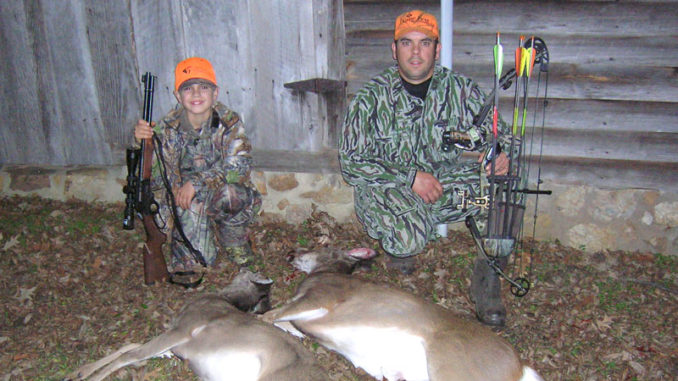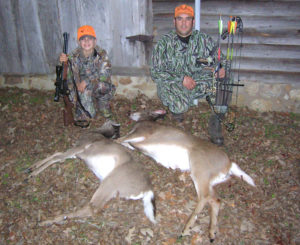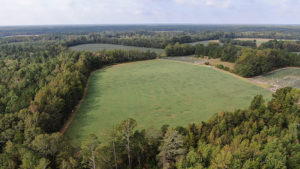
Deer hunting season is far from over
By December, many hunters have been regular visitors at their local wild-game processor. And for fortunate ones, a trip to the taxidermist highlighted a season during which a prized buck took its last breath.
But the season is far from being over. Hunters with large properties need to consider what impact they can make on their deer herd and habitat. December is the last month for deer hunters to put venison in the freezer and make any reasonable impact on the herd.
Deer thrive in the Carolinas because of the abundance of available habitat. They can live about anywhere and do. Deer and all other animals need adequate food, water and cover.
Even when suburbia compresses natural habitats, deer and other wildlife species find places to eat, sleep and drink. But it’s not exactly ideal for them. Deer colonize any wooded area and find food wherever they can. As they multiply and colonize suburban and urban areas, they experience a high rate of mortality. Vehicle encounters are the main cause of mortality in these areas. And that helps keep the population under control.
Local variations
In rural areas, cover is plentiful, and food is generally quite abundant, especially in the agriculture belt. However, the deer density across the Carolinas is variable on a regional and local level. Cover is typically not much of a problem. But localized food availability is highly variable. Mortality is also variable on the local level. Hunters kill lots of deer on some properties, but other properties haven’t had hunter harvests in a decade.
So how many deer can a property support? It depends on the available habitat. Some can support more than others.

The best way to explain is from a pond-management standpoint. A pond can support a certain number of pounds of fish per acre. Catfish farmers can raise a higher volume of fish in their lagoons by super-supplementing the food supply, manual aeration and by manipulating reproduction. Initially, lagoons are densely stocked with extremely high volumes of fish. Afterwards, farmers aerate ponds to maintain acceptable dissolved-oxygen levels and feed the fish high-calorie food around the clock to grow them out quickly.
Deer management is more difficult but not impossible
In the wild, deer management is a little more difficult. Deer can’t be grown with the same methods as catfish or any other type of closed-system management. They are free-ranging animals. And hunters can only affect the quality and quantity of the population by manipulating habitat, food availability and hunter harvest. It may be more difficult than raising catfish in a pond. But it’s not impossible. Land managers and hunters can make a significant impact on the health and quality of a deer population.
Making harvest prescriptions to regulate the deer population on a property can be subjective. It isn’t an exact science unless it’s 100,000 acres of contiguous land. Management on large properties is inherently easier. That’s because the manager has better control of the habitat and population within its limits. Management on smaller properties is more difficult because animals aren’t confined to a specific area. They can easily roam outside of the controllable boundaries.
You make the call
Deer hunters and property managers can make harvest decisions based on the degradation of the habitat, camera survey results, harvested deer health, etc. Properties with too many deer will experience over-foraging of native vegetation. And they’ll experience heavy damage to local agriculture crops.
Overcrowded deer populations produce lean, malnourished deer. Because of the rut, it’s best to examine does this time of year, not bucks. Most bucks are typically malnourished in December due to the effects the rut has on their bodies.
The weight of does in overpopulated areas are typically less than does in more-balanced populations. Hunters can also examine the fat on a deer’s kidneys. Kidneys lacking much external fat are an indication of poor food availability. Kidneys covered in fat show an abundant food source.
But one deer isn’t a good indicator of a herd health, either. It takes several deer to determine if the herd has adequate food. Examination of the entire property for degradation to habitat and crops is important to determine herd health.
Deer populations on specific properties can fluctuate throughout the year. And herd health can fluctuate over time. Reproductive females can drop anywhere from one to three fawns each year. If the habitat and food availability doesn’t improve, the deer population can grow to a point where the habitat can’t support it. When that occurs, both the deer and the habitat suffer. Habitat can only support a certain number of consumers. Land managers can provide additional habitat to support the higher number of deer or have hunters harvest more deer.
December harvest important
The best time to make a dent in the deer population is in December, when breeding is complete. Almost all does have been bred and have fetuses in their wombs. On properties where deer populations are high and the habitat is suffering, hunters can make an impact by taking does late in the season.
On the other hand, if the habitat and forage availability are in pristine shape, with minimal crop damage around the periphery, no additional harvesting outside of the existing plan should occur. In this case, bred does should be protected to maintain the healthy balance on the property.
It’s not an exact science. But the health of the deer and their habitats will serve as indicators for hunters and land managers to use to make harvest decisions.
Pay lower property taxes on hunting land
While many hunters hunt on leased land, many hunt on their own land. For the latter group, programs are available to lower their property tax rate on eligible properties.

Nobody likes to pay taxes. But counties need revenue to fund programs. Property taxes are one of the largest forms of county revenue. Counties administer taxes based on the land use. And higher-use properties like commercial, industrial and residential produce much more revenue per acre than undeveloped forestland and cropland. But when these properties are purchased, they are taxed at their market value and are never automatically taxed at the lower rate. It is up to landowners to request for the lower rate when eligible for certain uses.
Most hunting tracts contain agricultural and forest lands. Certain eligible properties being presently used for agriculture, horticulture and forestland can be assessed at a value consistent with that use rather than the higher, market value. The landowner must demonstrate that the parcels’ present use is consistent with the activities that qualify them for the lower rate.
For agriculture uses, landowners have to provide a history of crop yields. Forestland is defined as land that is a part of a forest unit actively engaged in the commercial growing of trees under a sound forest management plan. Consulting foresters such as Southern Palmetto Environmental Consulting, (www.southernpalmettoenvironmental.com) can prepare eligible forest management plans for tracts anywhere in the Carolinas.
For more information about applying for lower property taxes, contact Southern Palmetto Environmental Consulting, the N.C. Forest Service, the S.C. Forestry Commission, or your local cooperative agricultural extension service center.




Be the first to comment